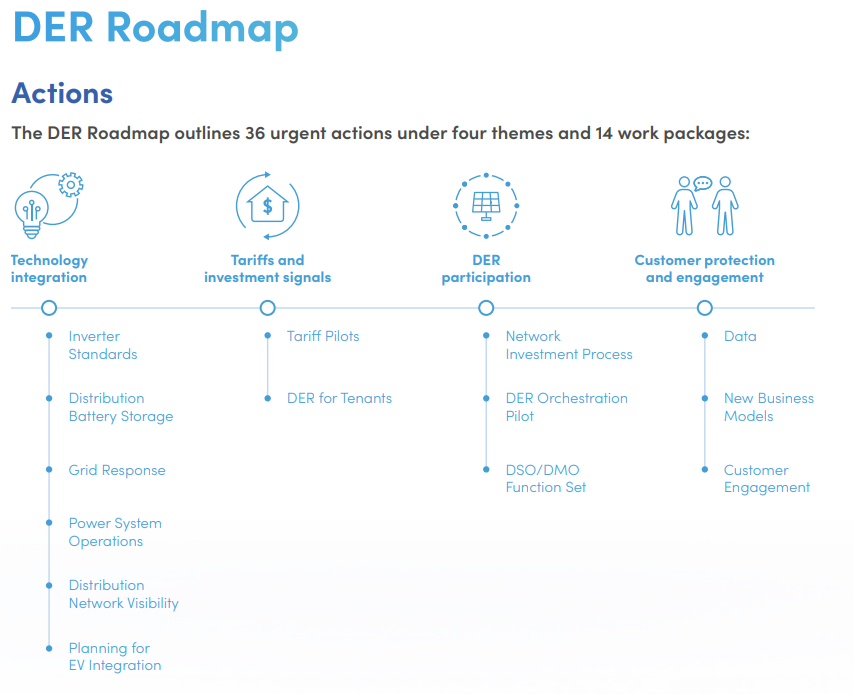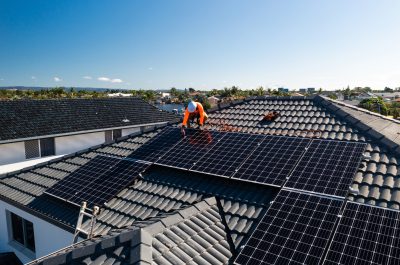A roadmap for the West
At about the same time as the Energy Security Board released its options paper for a renewables-enabling redesign of the National Electricity Market, the WA government issued a report card detailing its progress implementing its DER Roadmap.
To be fair, the scale of the challenge in the National Electricity Market (NEM) dwarfs that of WA’s Wholesale Electricity Market (WEM). However, it is equally the case that Western Australia has set a cracking pace identifying the actions needed to integrate small and large-scale renewables into its islanded power system.
The WA Roadmap – why it’s needed
WA’s energy transformation journey was officially launched in April 2020 with the Distributed Energy Resources Roadmap released by Energy Minister, Bill Johnston.
Produced by the State’s Energy Transformation Taskforce, this five-year plan includes 36 must-do actions to “guide the better integration of distributed energy resources (DER), including solar panels, battery storage and electric vehicles, and ensure the benefits are shared across all members of the community.”
This is necessary because the growth of solar PV on WA’s main grid, the South West Interconnected System (SWIS), is so fast, that it poses risks to the reliability and security of the power system. If this action isn’t taken, WA will experience increasing instability resulting in a vulnerable power system.
The challenge for WA is especially significant compared with other states, even our leading solar adopter South Australia. This is because the state’s power system is islanded with no interstate interconnectors to offload surplus generation.
One third of WA households have solar PV, with a record 300MW of small-scale solar added in 2020[1]. This is almost the same capacity as the State’s biggest coal-fired generator (340MW.)
On 13 March this year, at 13.20 hrs, rooftop solar generation set a record, making up a whopping 65 per cent of all power generated in the SWIS[2]. The Australian Energy Market Operator (AEMO) noted 35 per cent or 400MW of this generation was being exported into the grid, instead of being consumed by the households making it.
When power supply outstrips demand – as it is increasingly doing in the middle of the day when the sun is shining and solar systems are at maximum output – it can create voltage disturbances on the grid that threaten grid stability and optimum operation of the system.
The Distributed Energy Resources Roadmap Progress Report
The WA Government has a target of 2024 for all 36 of the roadmap actions to be complete. The objective is that the State’s DER will, in just three years, be increasingly integrated into the WEM and working in sync with the physical requirements of the SWIS.
In the past 12 months, the Energy Transformation Taskforce and the roadmap’s partners Energy Policy WA, Western Power, Horizon Power, Synergy and AEMO have made big advances on the most urgent of the roadmap actions.
This is not a simple task and involves changes to policy, technical, regulation and market settings.
The key themes and work packages are highlighted below.
Actions completed include the roll out of ten PowerBank batteries, a collaboration between Western Power and Synergy where community batteries provide network support and also have a retail product for customers to access their excess PV during evening peak. This was progressed along with regulatory changes to enable the efficient recovery of costs to the network. An advance still being worked on in the NEM.
Another key initiative has been the launch of a time-of-use tariff pilot to encourage more energy use in the middle of the day when solar generation is high (not unlike SA’s Solar Sponge Tariff). A Distributed Energy Buyback Scheme has also been launched, introducing time-of-export payments that better reflect the cost of electricity at different times of the day. Exports later in the afternoon and evening attract higher prices than those in the middle of the day.
Solar system inverter standards have also been updated to better support the power system.
To enable all this, changes to the network Access Code and other regulatory instruments have been and continue to be made.
It’s a sweet symphony
A critical component of integrating individual distributed energy resources into the power system is learning how they can be coordinated and managed (or ‘orchestrated’) to operate as a virtual power plant.
This is essential in ensuring grid stability but also provides customers with the opportunity to get maximum benefit from their solar and storage devices and even be paid to provide services – for example for providing stored battery power when the grid needs it.
To trial this, WA’s $35 million Project Symphony will soon be getting underway – a DER orchestration trial coordinating batteries, rooftop PV and other DER in a virtual power plant. More than 500 households and businesses are expected to participate.
A similar pilot, Project Edge, is operating in Victoria to demonstrate how DER marketplace integration could be done at scale throughout the NEM.
The outcomes of Symphony will help inform the outstanding action items in the DER Roadmap.
Next steps
The WA Energy Minister announced last week that the Energy Transformation Taskforce had concluded after two very fruitful years guiding the massive system changes.
Project Symphony’s work, further regulatory changes and the completion of various trials for network management and tariff arrangements are the final steps in the DER Roadmap implementation.
It is intended these actions will be complete in just three years, providing a working example of a DER-integrated electricity system that will no doubt provide significant learnings for NEM’s own transformation journey.
[1] Media Statements – Major milestones for Distributed Energy Resources Roadmap


